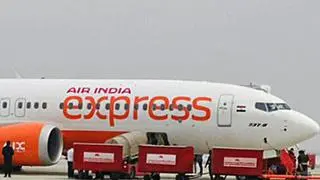Tariff revision proposals for Adani-owned Mumbai International Airport Ltd (MIAL) and GMR-owned Delhi International Airport Ltd (DIAL) are likely under-way by the Airports Economic Regulatory Authority (AERA). The tariff revision will be for user development fee at airports.
“The current tariff was supposed to end on March 31, 2024. However, it was pushed to September 30, 2024, for both the airports. Meanwhile, the AERA has begun the process of appointing consultants and seeking tariff proposals from both airports,” a person in the know said. Tariff revisions typically happen once every five years. This comes at a time when Delhi Airport (DIAL) has significant capital expenditure (capex) planned for upcoming infrastructure projects. On the other hand, this will be the first time Mumbai Airport will propose a user development fee under Adani Airports’ management. Delhi Airport is the busiest airport in the country and Mumbai airport is the second busiest airport in the country.
This review also coincides with the expected operationalisation of secondary airports in Noida and Navi Mumbai by the 2024-end and first half of 2025, respectively. These new airports could introduce competition and impact user-development fees at established airports. Sources say the MIAL is likely to submit its proposal in the next month, whereas DIAL is close to submitting the proposal. Both MIAL and DIAL did not respond to businessline’s query.
Additionally, India’s regulatory framework generally allows airports to recover reasonable investment costs, increasing the likelihood of approval, S&P Global said in its report.
Ratings Upgrade
S&P Global upgraded Delhi International Airport to ‘BB-’ with a positive outlook, anticipating significant cash flow improvement due to higher tariffs in the upcoming fourth control period (CP4). A control period refers to the five-year frame when tariff revisions generally do not happen. They forecast an OCF to debt ratio of 9.4 per cent FY26, rising to 12 per cent in FY27 with control period tariffs expected to more than double current levels. S&P Global’s expectation of higher tariffs for DIAL rests on several pillars.
Firstly, DIAL is actively seeking a significant increase in fees during the upcoming control period (CP4), with estimates suggesting these tariffs could more than double current levels. Secondly, the recently completed terminal expansion necessitates higher revenue to recoup costs, and DIAL’s application specifically targets these expenses, it said in its report.
Previously, the Delhi Airport CEO said, it reported a footfall of 7.2 cr in FY24, thereby exceeding pre-pandemic levels. International traffic was up 10 per cent from pre-Covid times. “Delhi has undergone a large capex project of increasing capacity. The airport is dependent on state-run AAI for increasing runway capacity and a large number of bays are occupied with grounded planes, limiting operations. This could mean higher prices for the pax as the airport tries to bridge the gap between expenditure and revenue,” said Ameya Joshi, founder, Network Thoughts.
The Mumbai Story
Currently, Mumbai airport continues to contribute the highest passenger traffic for Adani Airports at 13.9 million passengers in Q4FY24 (12.7 million passengers), followed by Ahmedabad airport, which handled 3.1 million passengers in the quarter (three million).
The current revision by the AERA will be on aeronautical charges. During the post-earnings call, asked, about the aeronautical and non aeronautical revenue split, Saurabh Shah Deputy Chief Financial Officer, Adani Enterprises, said, “Mumbai is at about 50-50. We are constantly trying to move that ratio…. 75 per cent which may come from non-aero, to 25 per cent which comes from aero. So that’s how we are also poised to grow this business. In the next 2 to 3 years, you will see a very big change in terms of the ratio from aero to non-aero.”







